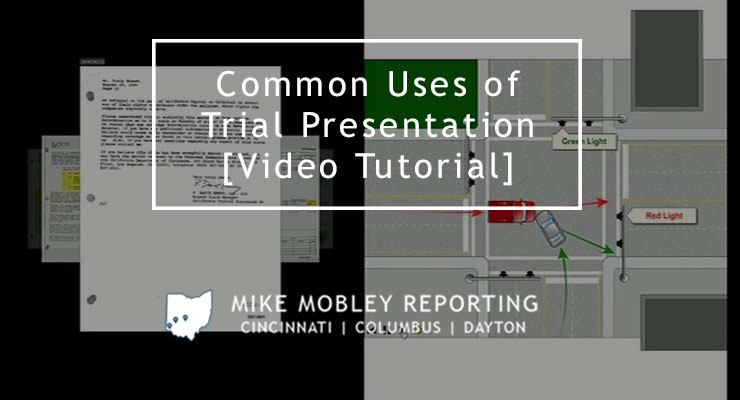Just How to Craft a Compelling Trial Discussion That Wins Instances
In the realm of trial campaigning for, the capability to craft an engaging discussion is vital to protecting desirable results. A successful trial presentation needs a nuanced understanding of the court's demographics and biases, alongside a thoroughly organized narrative that perfectly incorporates accurate evidence and psychological resonance. The strategic use of aesthetic help can amplify comprehension, while efficient shipment makes sure involvement and link with jurors. Yet, the art of anticipation-- resolving prospective concerns and objections-- remains a crucial element. Just how can these components be harmonized to produce an influential situation that resonates with the court?
Understand Your Audience
Understanding your target market is a critical part of crafting a reliable trial presentation. The jurors, judges, and various other individuals in a trial originated from varied histories, each having unique experiences and viewpoints. Thus, it is necessary to tailor your presentation to resonate with these individuals.

By framing your arguments in a means that aligns with their values and experiences, you can enhance engagement and persuade them efficiently. Ultimately, a well-considered method to target market understanding can substantially influence the result of your presentation and, subsequently, the test itself.
Structure Your Narrative
A well-structured narrative offers as the foundation of an engaging test presentation. To achieve this, begin with an interesting opening declaration that outlines the central style and sets the tone for the discussion.
Next, existing the truths in a logical sequence, ensuring that each item of proof develops upon the previous one. This chronological development assists jurors recognize the context and significance of each fact, thus strengthening your argument. It is important to weave in psychological components that resonate with the court, as this can stimulate compassion and assistance for your placement.

Conclude with a compelling closing declaration that repeats your bottom lines and leaves a lasting impression. Summarize the key takeaways and make a solid charm for the preferred decision. By structuring your narrative properly, you can produce a convincing trial presentation that not just educates yet likewise captivates and affects jurors in your favor.
Use Aesthetic Help
Integrating visual aids into your trial discussion boosts the jurors' comprehension and retention of details. Efficient use of visual aids can simplify complex data, making it much more available and interesting for the jury. Graphes, graphs, timelines, and pictures work as effective devices to show key factors and strengthen your story.
When choosing visual help, ensure they are appropriate and directly support your instance. Each aesthetic should be clear, properly created, and very easy to recognize at a glance.

Method Effective Distribution
Exercising reliable delivery is necessary for making an enduring impression during a trial discussion. The fashion in which browse around this site you convey your disagreements can substantially affect the court's assumption and understanding of your situation.
Additionally, keeping eye call with jurors cultivates link and interaction. Stay clear of reading directly from notes; instead, familiarize yourself with the material to ensure an extra natural delivery. Technique before colleagues or use recording devices to examine your efficiency and change appropriately.
Including storytelling techniques can additionally boost your discussion, making it extra relatable and memorable. Usage stops briefly effectively to emphasize vital points and allow the jury to show on the details provided.
Anticipate Questions and Arguments
Efficient shipment sets the stage for a compelling test presentation, yet anticipating concerns and objections is equally vital in protecting the jury's confidence. By planning for potential questions and challenges, lawyers can create a much more convincing narrative and demonstrate their command over the instance.
Begin by identifying one of the most likely inquiries the jury might have worrying key proof, witness trustworthiness, or legal concepts. Developing clear, succinct reactions ahead of time will certainly not just boost your argument but additionally showcase your readiness. Take into consideration common arguments from the opposite guidance-- whether pertaining to the admissibility of evidence or the importance of specific points-- and prepare counterarguments that efficiently deal with these concerns.
Additionally, preserve an adaptable frame of mind throughout the presentation. Pay interest to jurors' non-verbal hints; their body movement may show confusion or uncertainty. Being attuned to these signals permits for real-time adjustments to your delivery, offering clearness when needed.
Ultimately, expecting concerns and arguments transforms potential weak points into strengths, reinforcing your setting and instilling better count on the look at these guys jury. This proactive method not only boosts your reliability but additionally contributes considerably to the general efficiency of your test discussion.
Conclusion
An engaging trial presentation requires a comprehensive understanding of the target market, a well-structured narrative, and the tactical use of aesthetic aids. Jointly, these components add considerably read to shaping court assumptions and influencing situation outcomes, underscoring the importance of careful prep work in the art of test discussion - Trial Presentations.